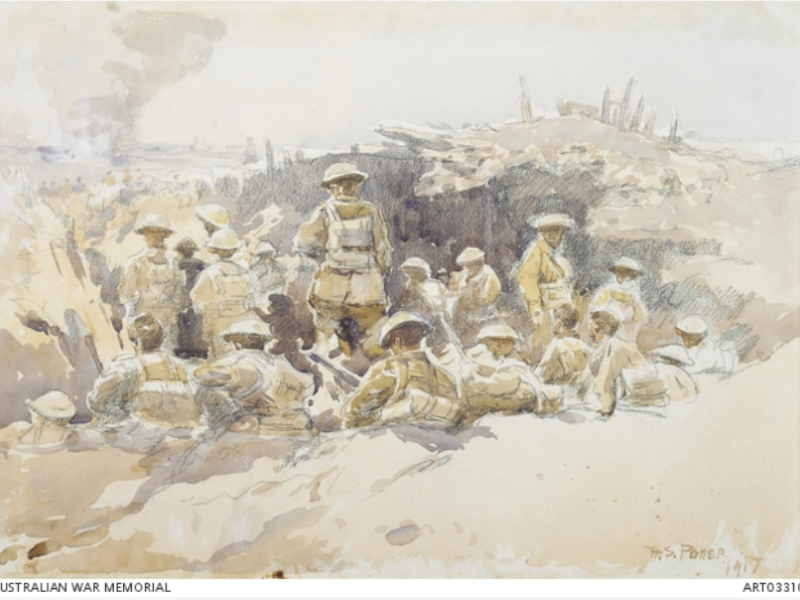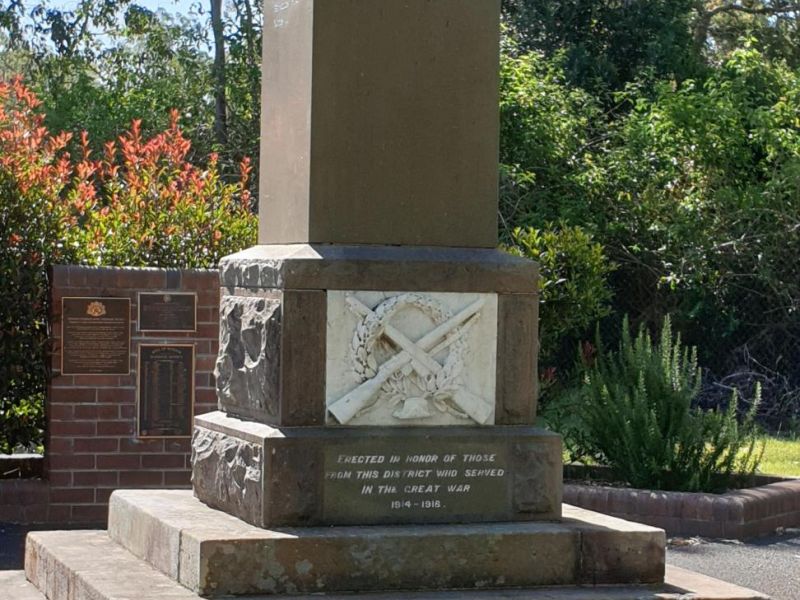Corporal David Edward Etches, 3rd Battalion, AIF
Born in Sydney in 1889 to James and Annie Etches, David Etches had an older brother, William, and a younger sister, Anne. He also had a half-brother, George, from his mother’s previous marriage to Thomas Southern.
Following his schooling Etches went on to become a butcher and was living in Paterson, a small community just north of Maitland in New South Wales, when he enlisted in the Australian Imperial Force in August 1915.
Private Etches was assigned to the 3rd Battalion, which like the 1st, 2nd, and 4th Battalions was recruited from New South Wales. Together these battalions formed the 1st Brigade.
Etches embarked from Sydney on board RMS Osterley in January 1916, and sailed to Egypt. After further training, he was sent with his battalion to France and the Western Front.
From its arrival in France until 1918 the battalion took part in operations against the German army, principally in the Somme Valley. The battalion’s first major action in France was at Pozières in July 1916. After participating in the fighting at Ypres, Belgium, the battalion returned to the Somme for the bitterly cold winter.
In November Etches was promoted to lance corporal and the following February he undertook training at the Anzac Bombing School. He returned to his unit for a few months, but in May was again removed from the front to attend training for non-commissioned officers. He was promoted to corporal in July and was sent for further training in England.
Corporal Etches re-joined his battalion in early October, now fighting in increasingly difficult conditions at the Third Battle of Ypres.
On 10 November 1917, the 3rd Battalion had just entered the front line near the Belgian village of Passchendaele. The Germans were shelling the area, particularly the rear lines, and this, as the 3rd Battalion’s war diary noted, “made the going bad”.
More than 50 men of the 3rd Battalion became casualties that day, including 13 killed.
Corporal David Etches was hit in the shoulder by fragments of a shell which had burst nearby. He was evacuated from the front line but died of his wounds on 16 November at the Liverpool Merchants’ Hospital in Ètaples. He was buried in the nearby Ètaples Military Cemetery.
In April 1918, a memorial service was held for Corporal Etches back home at St Paul’s Church in Paterson. The church was draped with flags and a wreath was suspended from the altar. The rector touched upon the character of the late corporal:
“He was, although perhaps considered by many to have a, the possessor of a large heart, and was generous, kind, and sympathetic, and always ready with a willing hand to help anyone in distress.”
Emma Campbell, Researcher, Military History Section
Image: Australian soldiers wait in the trenches at Passchendaele in Belgium. The Battle of Passchendaele was also known as the Third Battle of Ypres. Septimus Power drew this image while as an official war artist attached to the 1st Division of the AIF during the Passchendaele offensive.

 Australian War Memorial
Australian War Memorial